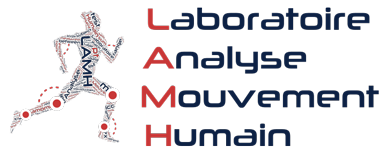Psychology
Effect of negative stereotypes on the gait and balance of older adults
Investigators: M. Marquet (UPsySen), S.Adam (UPsySen), C. Schwartz (LAMH), C. Beaudart (Service de Santé Publique, d’Epidémiologie et d’Economie de la Santé), O., Bruyère (Service de Santé Publique, d’Epidémiologie et d’Economie de la Santé).
Numerous studies reported negative effects of stereotype threat on older adults’ mental health. In this context, our aim is to verify whether negative information about loss of balance during aging may affect the performance of older people in different physical tests.
People aged 65 years and over are recruited among subjects of the SarcoPhAge project who are not sarcopenic or at risk of falls. During the experiment, subjects are performing a series of physical tests (such as the Timed Up-and-Go task and the one-leg stance test) under high or low stereotype threat. In the low threat group, the tasks are described as walking tests aiming at analyzing movements in 3D. In the high threat group, people were first given information suggesting that individuals aged 65 and over have higher risk of falls and decreased balance. Then, all tests are described as balance tests.
According to the literature, subjects in the high threat group should be more vigilant to their performance (they try not to confirm negative information), which in turn might disrupt more proceduralized performance processes that usually run more automatically. Therefore, we can hypothesize that these people will have a lower walking speed and a poorer balance compared to participants in the low threat group.
Veterinary Medicine
Effect of nutraceuticals in vivo in dogs suffering from osteoarthritis
Investigators: F. Comblain (UROC), Y. Henrotin (UROC), M. Balligand (Chirurgie et clinique chirurgicale des petits animaux), C. Schwartz (LAMH), N. Barthelemy (Chirurgie et clinique chirurgicale des petits animaux), M. Lefebvre (Chirurgie et clinique chirurgicale des petits animaux).
The Bone and Cartilage Research Unit (BCRU) and the LAMH are conducting a randomised, double-blinded, placebo-controlled clinical trial including 50 dogs with limb osteoarthritis to investigate the effects of diet formulated by Royal Canin and the BCRU. These dogs are feeding with a standard diet or the anti-OA diet for a 3-months period. The primary outcome is the peak vertical force measured on the LAMH plateform. Secondary end-points are soluble biomarkers developed by BCRU and commercialized by ARTIALIS SA, a spin-off company of the University of Liège.




